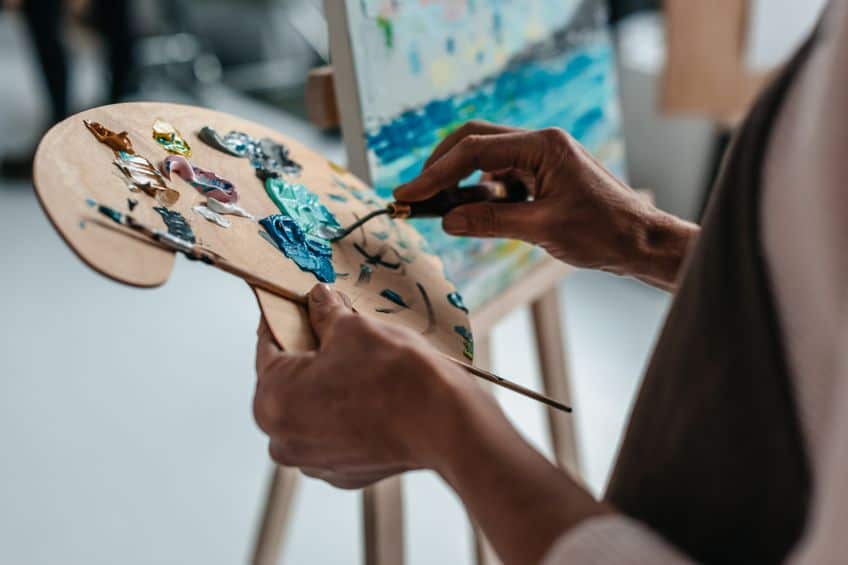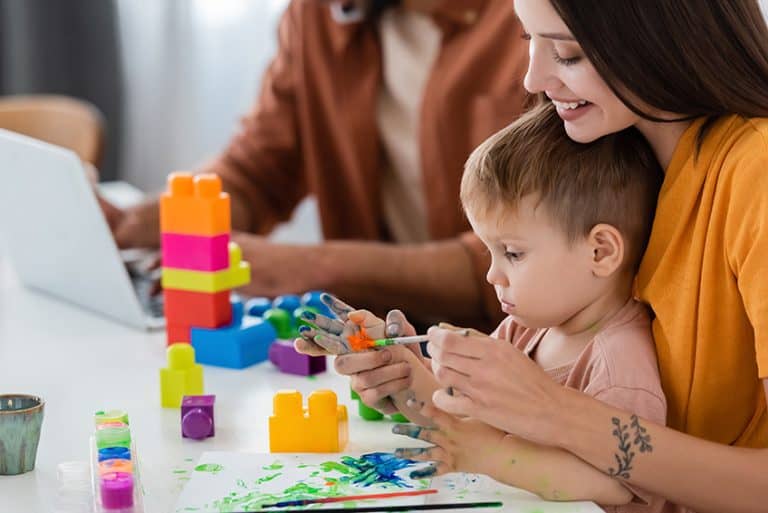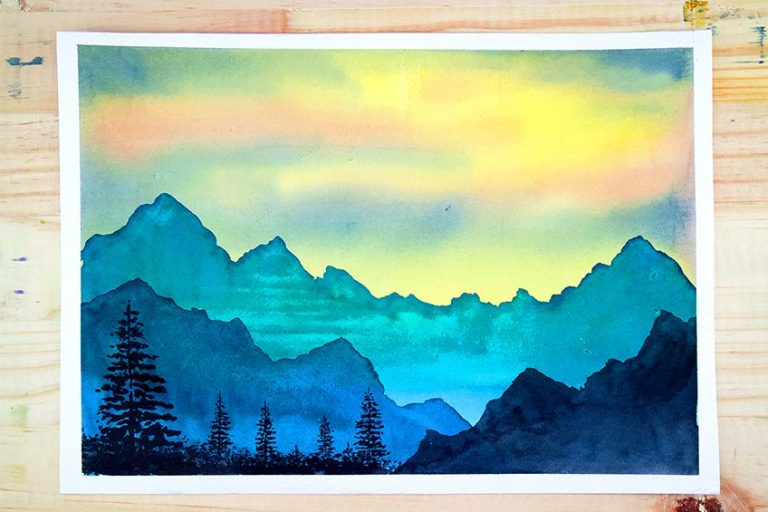What Is Painting? – Explore the World of Visual Art Painting
What is a painting? You might think that the answer to this question is quite simple. You have more than likely come up with an answer that most of us would agree with. However, many things have changed or evolved in the modern world, and defining something as a painting has become a little more open to interpretation. Let us see if we can open up a path to understanding the definition of what a painting is.
What Is Painting?
Humans have found many ways to express themselves over the years, and visual art painting stands high on the list. Painting is important because it is a way that we can express our ideas and emotions. Painting also offers many benefits from developing creativity and improving various skills to helping support emotional well-being.
In this article, we will be covering a brief overview of the history of painting, and types of paints, and we will go over a few painting techniques and artistic composition. However, before we get into that, let us first discuss what a painting is in a bit more detail.
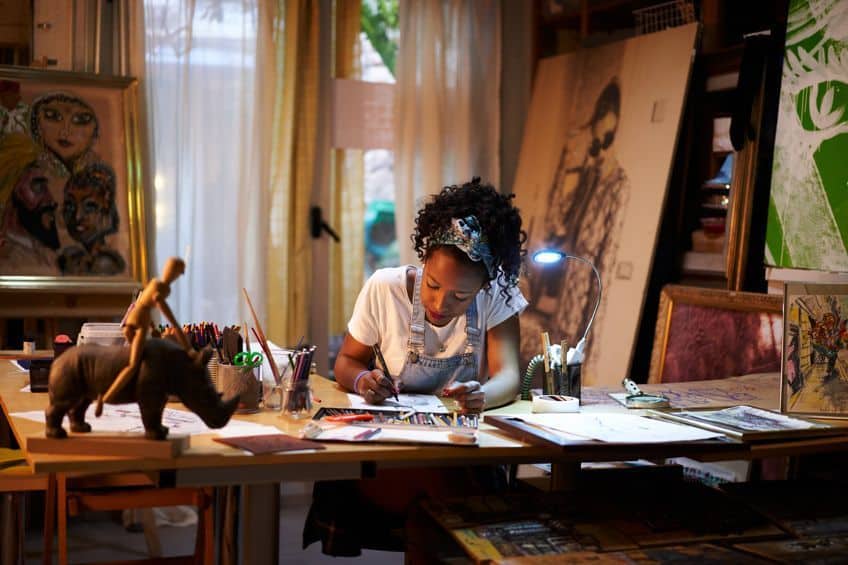
The most common way to describe a painting, as we have mentioned, is an expression of certain emotions and ideas. These ideas are made into reality on a two-dimensional surface and provide a certain aesthetic quality. The components added include things like color, movement, space, light, and surface. Combined, these elements create a visual art painting that represents real experiences or is an interpretation of a theme or idea, which could make it more abstract.
The traditional western art history definition of a painting also includes the medium used, which is usually a pigment mixed into some liquid or binding element creating oil paints, watercolors or water-based paints, ink, or gouache. These are applied to a canvas, other flat surfaces, or “support” using a paintbrush or other tool. The choice of medium and techniques used, come together to create a visual art painting. The act of painting and the actual artwork or painting, both use the same term.
What is painting in this day and age has become a bit more complicated to describe. There are now many points of view on the matter. Today, there are many mixed media ideas, and the added form of digital art has also come into the picture. The lines have become blurred as to a single definition..
The mixed media idea of paintings can include a variety of mediums that are both organic as well as synthetic materials and includes more than simply paint. Many of these ideas also involve the use of photography and printing. So, the distinction between a painting and the rest of the elements included like techniques or style used can become difficult to discern. It has become a way to reinvent the traditional medium of painting.
History of Painting
You can say painting has been around for thousands of years, as many cave paintings have been discovered all around the world. People have always had the desire to express themselves, which has carried through the ages. The only major factor that is different, is we have moved from rock faces to canvas, paper, and other surfaces. The range of pigments has also grown from using earth minerals like copper, plant extracts, and even insects, to more modern and synthetic varieties that rely on a chemical reaction.
When looking at Western art history, the main mediums used included oil paints and watercolors, which involved different styles and subject matter. However, in the East, paintings also have a rich tradition, but the primary medium used was and is still ink. Eastern paintings also use silk or paper, instead of canvas. Some traditional Chinese paintings, called guóhuà, are closer to calligraphy than what some consider a painting. This brush painting is an old Chinese tradition that uses colored and black ink, which is applied to silk or paper support. So, if you categorize a painting according to only a single viewpoint, it may become a bit narrow-minded.

Moving back to more Western culture, in the 15th century, the discovery of using linseed oil to produce a more durable medium, contributed to a lot of creativity during the Renaissance period. Egg tempera paint was also commonly used during these periods to create frescos or murals on wet plaster. When considering these earlier cultures and traditions, in many cases, the royalty, guilds, or religious groups controlled a lot of what artists could or could not do. These groups decided on the subject matter and whether it would be used for decorative, religious, functional, or entertainment purposes, and skilled artisans would bring these pieces to life.
Patronage, which is a group or individual who sponsors an artist became popular somewhere between the 14th to 17th centuries. In most cases, an artist was commissioned to do the work and did not have control over the subject matter. Later, in Europe, well-known artists were given the title of “fine artists” and were offered the social standing of scholars. So, they could sign their art and were often in control of the subject matter and other aspects of the painting.
When the 19th century came, many of the painters in Western circles saw a decline in patronage, which also affected their social standing.
However, artists began to hold their own art exhibitions and began to sell their own work, and the freedom to be creative. The Impressionism and Expressionism movements were some of the first to promote personal artistic composition as contemporary painters began to explore the world of painting beyond religion and politics. This manner of self-promotion could only be done through galleries and art museums in the early 20th century. Also, on occasion, artists were commissioned by the state or other industries. Symbolist art began to rise after this period, as artists were able to use their work to explore more niche areas of life without state control.
There were also art fairs, traveling exhibitions, and art journals, where artists could find exposure. This meant that mixed media and other more unique ideas came into the picture. This just expanded when the internet and social media came into the picture. Now you have styles like the more contemporary and modern art that blur the line between traditional painting and modern conceptual artworks.
Painting Techniques
Painting is an essential part of the visual arts and can be anything from still life to a landscape, or any other subject matter of painting. There are many styles of paintings available from realism and abstract to impressionism and pop art, among many others. The common medium used is usually oil paints or various other water-based paints, but there are other mediums also.

The common tool when applying paint is usually a paintbrush, but there are other tools as well, such as palette knives, roller brushes, sponges, rags, or airbrushes. The painting support can also be many other materials besides canvas, for example, you can paint on wood, glass, walls, pottery, and concrete. A Painting could also include many other materials besides paint, such as gold leaf, sand, and paper, among others.
Let us look at a few other types of paints you can get and some basic painting techniques.
Different Types of Paints
There are different types of mediums you can use to create a painting. Each of these mediums has its own properties, which each painter can use to their advantage. We have provided a list of some important mediums used for paintings.
- Oil paints: Oil paints have pigment particles that are suspended in oil, the body of the paint, which makes them slow drying. The pigments are also vibrant and of high quality, and the paint is lightfast, thick, and creamy.
- Watercolors: A water-based paint that is more translucent, dries quickly, and is permanent or lightfast. The paints are also non-toxic and easy to clean. Additionally, watercolor paints can come in a dry or liquid form.
- Gouache paint: An opaque, thick, water-soluble paint that has similar properties to both watercolors and acrylic paints. It is fast drying and becomes water resistant once dry.
- Encaustic: A wax-based paint that produces vibrant color, is durable, and is water-resistant. Using it produces a unique optical and layered effect but is difficult to work with.
- Acrylic paints: This paint is also water-based but is thicker and opaque. The paint dries quickly, and permanently and is water-resistant. These paints are cheaper and more durable than oil paints, and have an acrylic polymer binder.

- Pastels: You can also use pastels for painting, a pigment and binding agent that come in the form of a stick. They come with a high pigment concentration and are easy to carry around and use. Pastels are similar to chalk, but have a more buttery texture.
- Spray paints: This is a thin consistency paint that comes in cans, or you can use it with spray guns. There are both water and oil-based options available. Most spray paints are fast drying, durable, and flexible once dry. The paint also offers great coverage.
- Tempera paint: This paint has egg yolks as a binder, however, other binders like glycerin are used today. It is a water-based, fast-drying paint that is affordable, non-toxic and comes in many vibrant colors.
- Inks: A liquid that contains pigments or dyes and offers a more fluid application. Inks offer a high color intensity and can be used in many ways including printing. Ink dries fast but can be more expensive than paint.
Tools and Materials Required for Painting
Some painting tools you need to start with, while others you can bring in at a later stage, or maybe do not even need at all. It is always a good idea to get good quality paint and painting tools. Your tools and materials will also depend on the type of paint you are using. If painting with oils, you will need solvents.
Let us look at a basic kit needed to start acrylic painting.
- Acrylic paints
- Paintbrushes
- Palette knives
- Clean rags
- Canvas
- Palette
- Container of water
- Gesso
Basic Painting Techniques for Beginners
Depending on the medium you use, the techniques can vary. For example, wet-on-wet techniques are used more for oil and watercolor painting. However, when painting, it is always recommended you experiment and practice these techniques. Once you have the basics down, you can move on to more challenging techniques. Below are some basic beginner acrylic painting techniques for you to consider.
- Dry brushing: Use a dry brush and remove most of the paint from the brush before applying it to the canvas.
- Stippling: This technique creates texture or a pattern, using small dots.
- Hatching: Similar to stippling, this technique uses lines instead.
- Dabbing: You can use a sponge or rag dipped in paint to apply to the canvas.
- Underpainting: Apply a layer of paint before you begin your actual painting.
- Painting with a palette knife: This can help with blending colors and creating various effects.

- Detailing: As the word implies, adding details to your painting.
- Layering: Allowing each layer of acrylic paint to dry before painting another layer.
- Blending: Learning how to blend paints, which can be done on a palette or paints can be blended directly on the canvas surface.
- Painting in blocks of color: This will help you to understand how to work with various tones.
- Stenciling: You can use stencils to easily apply shapes and patterns.
Advanced Techniques for Experienced Painters
Now that you have some experience and understand the properties of the paint and how they work, you can try more advanced painting techniques. There are quite a few, but here are some to get you started.
- Sgraffito: This technique means scratching away wet paint that exposes the bottom layer and leaves behind interesting effects.
- Applying glazes: Applying layers of thin transparent paint, creating depth, and improving colors.
- Painting with mediums: There are many mediums or additives you can use to modify the paint. You can make acrylic paint dry slower or change its consistency.
Famous Painters and Their Contributions to the Art World
If we were to make a list of all the famous painters in history until now, there would be too many to mention. So, we will provide only a few examples of older or more traditional examples and a few more contemporary painters in today’s art world. There have been so many painters and paintings over the years, however, only a small percentage can be seen as “classic”. Most have become familiar to the public, and we are sure you will recognize most of them.

Leonardo da Vinci (1452 – 1519)
| Title | Mona Lisa |
| Date completed | 1503 |
| Medium | Oil paint on poplar wood |
| Dimensions (cm) | 77x 53 |
| Gallery | Louvre Museum, Paris, France |
One of the more well-known paintings by Leonardo da Vinci is the Mona Lisa (1502). People have been mesmerized for years by the calm woman, who seems to be smiling. Many have wondered who this woman was, was she da Vinci’s wife, mother, or another woman? He also did many other well-known paintings.
For example, The Last Supper (1495-1498), the Vitruvian Man (1490), or his Self Portrait (1512).
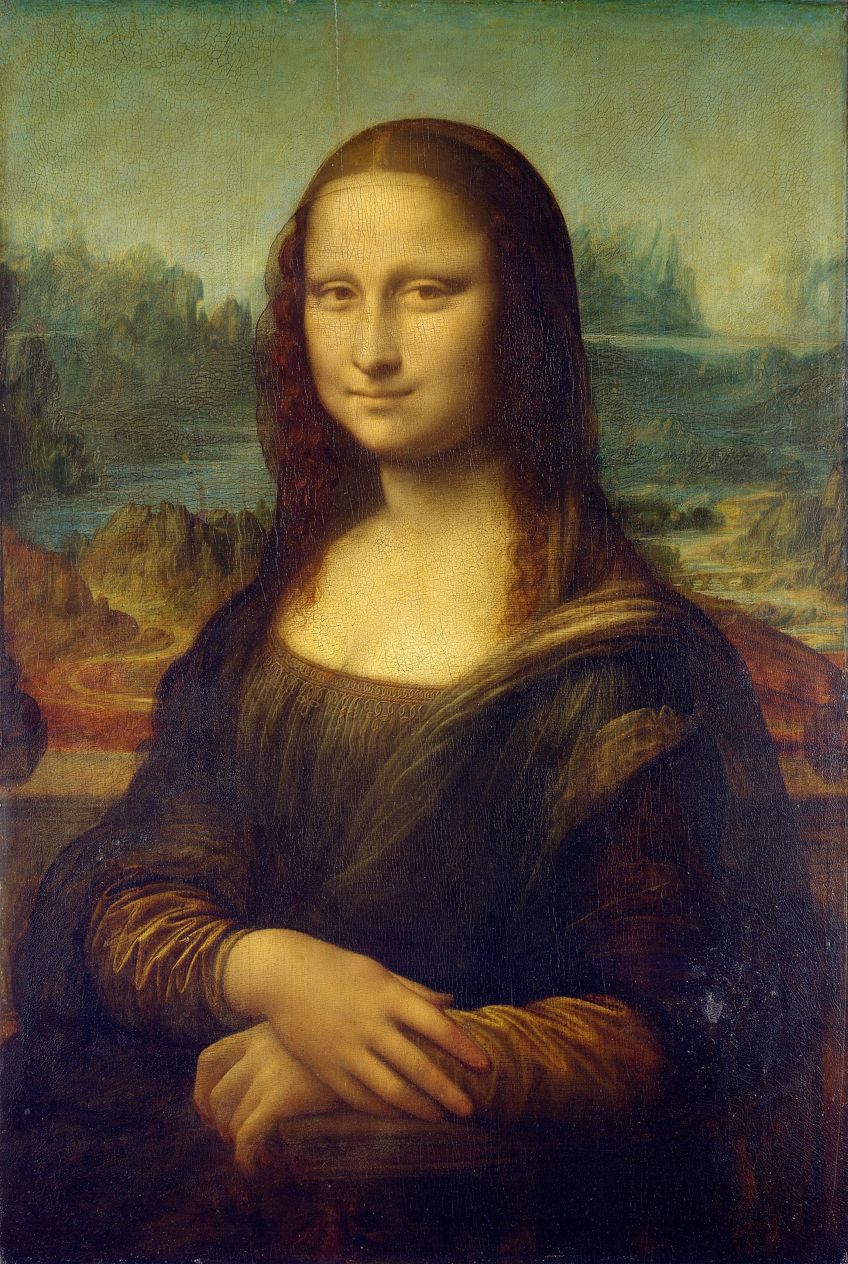
Johannes Vermeer (1632 – 1675)
| Title | Girl With A Pearl Earring |
| Date completed | 1665 |
| Medium | Oil paint on canvas |
| Dimensions (cm) | 44 x 39 |
| Gallery | Mauritshuis Museum, the Hague, Netherlands |
The Girl With A Pearl Earring (1665) is a well-known painting done by Vermeer. It is surmised that the girl was a maid in his house. There is much symbolism in the painting, such as purity, and the painting provides a certain timeless peace or mystery similar to the Mona Lisa (1502).
The Milkmaid (1658) and Girl Reading a Letter (1659) are other examples of Johannes Vermeer’s paintings.
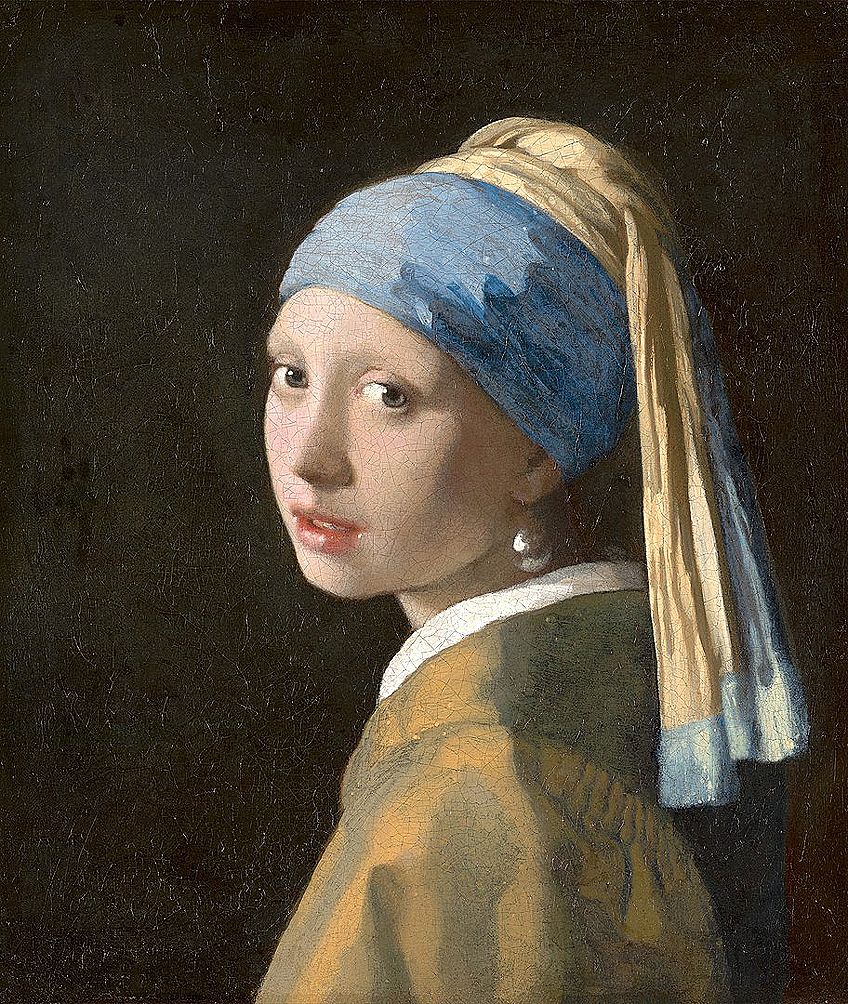
Vincent Van Gogh (1853 – 1890)
| Title | The Starry Night |
| Date completed | 1889 |
| Medium | Oil paint on canvas |
| Dimensions (cm) | 74 x 92 |
| Gallery | The Museum of Modern Art, New York City, United States |
The above painting must be one of the more recognizable paintings done by Vincent Van Gogh, with its swirls and colors. This painting was done in Saint-Rémy, where Van Gogh committed himself to an asylum. The painting can be seen as a reflection of how turbulent his mind was during this time. Other famous examples include Vase with Fifteen Sunflowers (1888) and Café Terrace at Night (1888).
Many other painters like Claude Monet (1840-1926) or Pablo Picasso (1881-1973) and many others could also be mentioned. All contributing to different styles and types of painting over the years.

Contemporary Artists and Paintings
In the past, paintings were simply defined as wet mediums like oil paints or watercolors applied to a flat surface. Today, paintings and art can be a mixture of both organic and synthetic materials, a mixed-media combination of ideas. Below are a few artists, who take the idea of paintings to the next level.
- Robert Rauschenberg (1925 – 2008): Another American painter that used different materials in his artwork and altered the definition of what is a painting. For example, his art piece known as Canyon (1959), combines both the elements of sculpting and painting.
- Pat Steir (1940 – Present): An American painter who produces abstract and conceptual art and defines paintings as something that simply uses paint. For example, July Waterfall (1991).
- Katharina Grosse (1961 – Present): A German artist who combines sculpting, painting, and architecture in her work. For example, Rockaway (2016), a large-scale reinvention of an abandoned military building.
As you can see, painting has progressed over the years. It is not merely a single method of using paint on a canvas surface, as there is much more to the modern definition of what painting is. Whether you agree or not, painting still plays an important part in society and the world.
Frequently Asked Questions
What Is Painting?
Painting is traditionally considered a visual art that uses a wet paint medium that is applied to a canvas using a paintbrush. However, there are different surfaces you can paint on besides canvas, and other tools you can use to apply the paint. Today, more modern art and mixed-media art are also considered paintings. So, the definition has expanded somewhat.
Why Is Painting Considered Important?
As a form of visual art, painting is a way for artists to express themselves. Painting is also important to help improve creativity, improve cultural appreciation, and it can have various physical and emotional benefits, such as improving focus and building self-esteem.
What Are the Three Main Types of Visual Art?
There are quite a few forms of art, however, the traditional fine arts can be divided into three main categories. These include your visual art painting, sculpting, and architecture.
In 2005, Charlene completed her Wellness Diplomas in Therapeutic Aromatherapy and Reflexology from the International School of Reflexology and Meridian Therapy. She worked for a company offering corporate wellness programs for a couple of years, before opening up her own therapy practice. It was in 2015 that a friend, who was a digital marketer, asked her to join her company as a content creator, and this is where she found her excitement for writing.
Since joining the content writing world, she has gained a lot of experience over the years writing on a diverse selection of topics, from beauty, health, wellness, travel, and more. Due to various circumstances, she had to close her therapy practice and is now a full-time freelance writer. Being a creative person, she could not pass up the opportunity to contribute to the Art in Context team, where is was in her element, writing about a variety of art and craft topics. Contributing articles for over three years now, her knowledge in this area has grown, and she has gotten to explore her creativity and improve her research and writing skills.
Charlene Lewis has been working for artincontext.org since the relaunch in 2020. She is an experienced writer and mainly focuses on the topics of color theory, painting and drawing.
Learn more about Charlene Lewis and the Art in Context Team.


